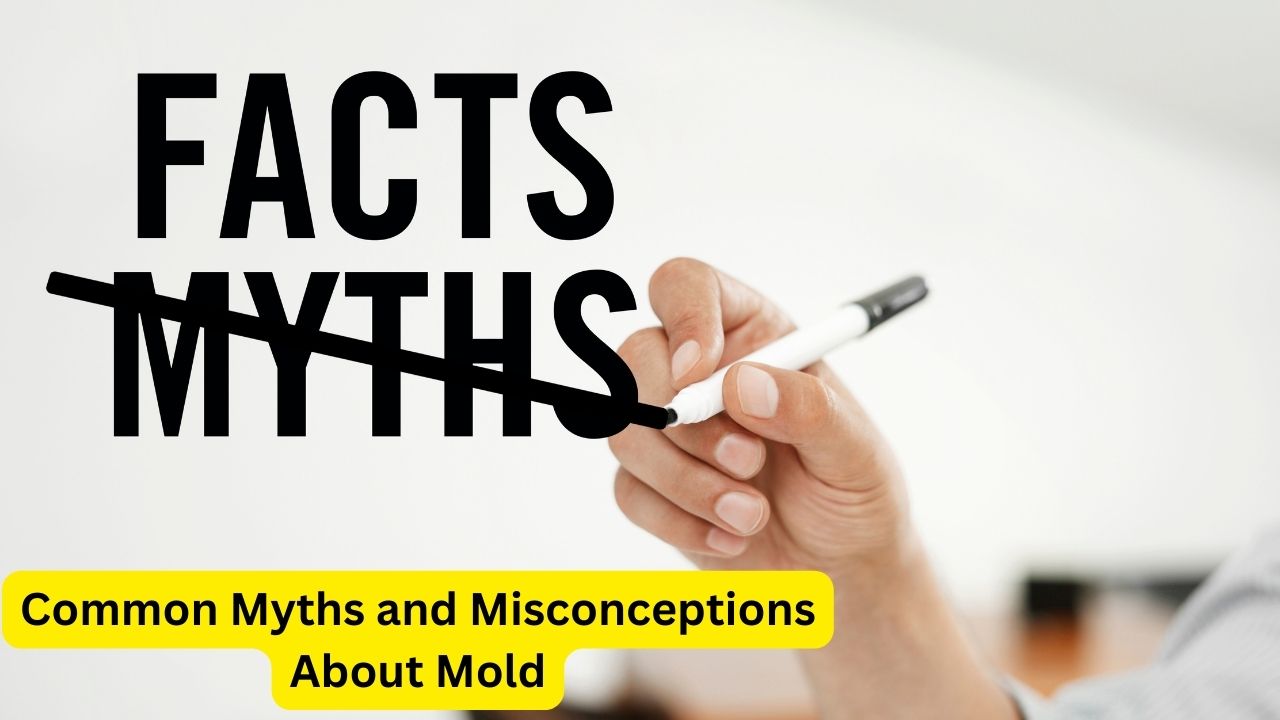Misunderstood by many, mold is a prevalent problem in many homes. Despite its prevalence, there are numerous myths and misconceptions about mold that can lead to improper handling and serious health risks. Whether you’re in an older home or a brand new one, understanding the truth about mold is essential for maintaining a safe and healthy living environment. This article aims to debunk some of the most common myths about mold, providing accurate information to help you better manage this persistent problem. If you’re in need of professional advice, consider scheduling a mold inspection Staten Island service from Ace Mold to ensure your home is mold-free.
“Bleach Kills Mold Completely”
1. Surface Effectiveness Only
Bleach is effective at killing mold on hard, non-porous surfaces like tiles and countertops because it cannot penetrate porous materials. On materials like drywall, wood, or fabric, bleach only cleans the surface, leaving mold spores deep within to potentially continue growing and spreading.
2. Temporary Solution
While bleach can eliminate visible mold on certain surfaces, it often provides only a temporary solution. Mold is likely to return if the underlying cause, typically excess moisture, is not resolved. Without addressing the source of the moisture, the mold will regrow, making bleach an inadequate long-term fix.
3. Health Risks
Cleaning mold with bleach releases potentially harmful fumes that can irritate the respiratory system. These fumes can exacerbate asthma, allergies, or other respiratory conditions, particularly in sensitive individuals. Proper ventilation and protective gear are necessary to mitigate these health risks during mold cleanup with bleach.
“Mold Won’t Grow in Dry Climates”
1. Indoor Humidity
Even in arid regions, indoor activities can create microenvironments with enough humidity for mold to thrive. A lot of moisture is released into the air when people cook, shower, and dry their clothing indoors. Without proper ventilation, this moisture can accumulate, raising indoor humidity levels and fostering conditions conducive to mold growth.
2. Water Intrusion
Regardless of external climate conditions, water intrusion from leaks in plumbing, roofs, or windows can create damp areas inside buildings. These moisture-rich environments provide the perfect breeding ground for mold. Promptly addressing leaks and ensuring proper sealing and insulation can help prevent mold proliferation.
3. Condensation
Poor ventilation in homes can cause condensation on windows, walls, and other surfaces. This occurs when warm, humid air meets cooler surfaces, creating droplets of water. These damp areas offer the moisture mold needs to grow. Ensuring adequate airflow and using dehumidifiers can mitigate condensation.
“Small Amounts of Mold Are Harmless”
1. Health Issues
Even small amounts of mold can produce allergens and mycotoxins, leading to allergic reactions such as sneezing, itchy eyes, or skin irritation. Additionally, exposure can exacerbate respiratory conditions like asthma and bronchitis, making it crucial to address any mold presence, regardless of quantity, to protect overall health.
2. Spreading
Mold spores are microscopic and easily dispersed through air currents, settling on various surfaces and initiating new growth. This ability to spread rapidly can lead to larger infestations if not contained, increasing the risk of widespread contamination throughout the home and necessitating timely intervention.
3. Structural Damage
Over time, mold can infiltrate and degrade building materials such as wood, drywall, and insulation. This deterioration can weaken the structural integrity of your home, leading to costly repairs and potential safety hazards if not addressed promptly. Regular inspections can help identify mold before it causes significant damage.
“Only Old Homes Get Mold”
1. Construction Materials
Modern building materials, including drywall and synthetic insulation, can absorb moisture and are vulnerable to mold growth. If these materials become damp due to leaks or high humidity, they can create a breeding ground for mold, potentially compromising indoor air quality and the overall health of the home.
2. Building Practices
Innovative construction techniques, while beneficial in many ways, can inadvertently trap moisture within walls or hidden spaces. For example, tight sealing and inadequate ventilation can create stagnant air pockets that foster mold growth, emphasizing the need for proper moisture management during the building process to prevent future issues.
3. Incomplete Drying
New homes require adequate drying time after construction and during the initial occupancy phase. If construction materials are not fully dried before closing up walls or moving in, trapped moisture can lead to mold development. Ensuring proper ventilation and monitoring humidity levels during this critical period is essential to prevent mold issues.
“Mold Removal Is a One-Time Fix”
1. Reoccurrence
Mold removal is not a permanent solution if the underlying moisture problem is not addressed. Without fixing leaks, drainage issues, or high humidity levels, mold spores can thrive and regrow, necessitating repeated remediation efforts. It’s essential to identify and eliminate the source of moisture to prevent recurrence effectively.
2. Ongoing Monitoring
After mold removal, consistent monitoring is crucial to ensure mold does not return. Regular inspections and maintenance can help identify potential moisture sources early. This includes checking for leaks, maintaining ventilation systems, and using humidity sensors to track indoor levels, ensuring a mold-free environment over time.
3. Preventative Measures
To minimize the risk of future mold growth, implementing preventative measures is vital. Using dehumidifiers can effectively lower humidity levels while improving ventilation promotes air circulation. Another way to lessen the chances of mold growth in vulnerable places is to choose materials that are resistant to mold during building and restorations.
Conclusion
Understanding and dispelling common myths about mold is crucial for maintaining a healthy living environment. Mold can pose significant health and structural risks, regardless of the climate or the age of your home. By addressing moisture issues, using proper cleaning methods, and taking preventative measures, you can effectively manage and prevent mold growth. For comprehensive solutions, consider professional services for mold removal Bronx NY from Ace Mold, to ensure your home remains safe and mold-free. Regular inspections and ongoing prevention efforts are key to keeping mold at bay and protecting your family’s health.









